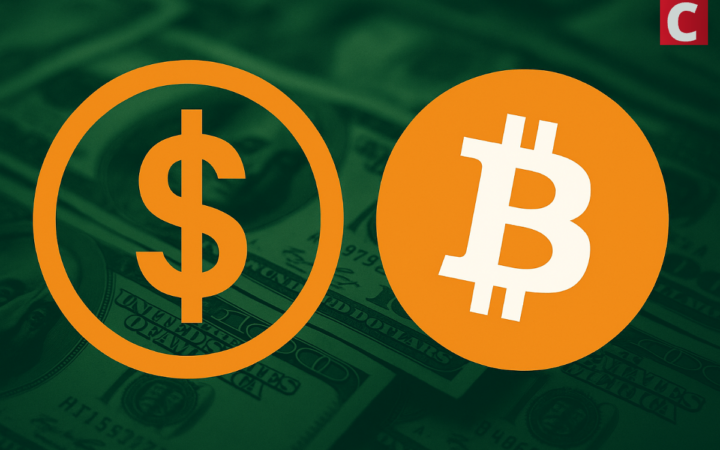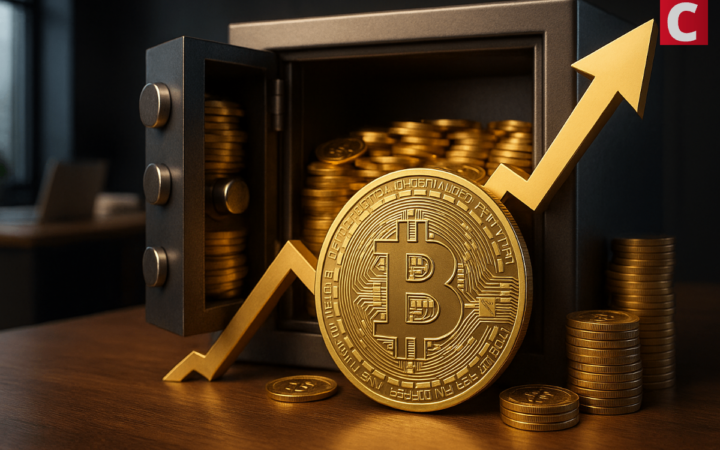
Please check out latest news, expert comments and industry insights from Coinspeaker's contributors.
As digital assets gain attention in developing economies grouped by high inflation and volatile local currencies, they’re rapidly becoming essential for financial freedom and stability.
 Edited by Julia Sakovich
Updated
7 mins read
Edited by Julia Sakovich
Updated
7 mins read

Bitcoin and the wider cryptocurrency industry have been gaining increased prominence in emerging economies, especially in countries where traditional financial services are either inaccessible or unable to support user’s needs. It’s a trend that underscores crypto’s potential utility beyond a store of value, as it’s primarily seen in developed nations. In emerging countries, crypto has become a viable alternative for financial transactions.
In developing nations, users have taken to crypto not only because they see it as a promising investment. More commonly, the citizens of such countries see digital currency as preferable to their own volatile currencies. This is especially true in places hit by high inflation rates. Bitcoin, with its limited supply, acts as an anti-inflationary mechanism that allows people to preserve the value of their savings.
This trend is illustrated in countries such as Venezuela, where the local bolivar has suffered from extreme hyperinflation over the last decade, to the extent that some people simply weigh bags of banknotes rather than counting them. It’s also true of places such as Kenya and Nigeria, where crypto adoption is driven by the limitations of traditional banking services. In Kenya, crypto’s accessibility appeals to millions who are underserved by traditional financial institutions, while in Nigeria, people are turning to crypto as the price of everyday goods and services increases due to what many perceive as the government’s economic mismanagement.
Elsewhere, El Salvador’s move to embrace Bitcoin as legal tender represents a concerted effort by that country’s government to prop up a weakened economy with digital assets that can enhance financial inclusion and stability. Moreover in Argentina, the recent political shift there is likely to lead to the creation of an environment that’s even more conducive to crypto. Argentina’s new president Javier Milei’s plan to abandon the local currency in favor of the dollar will also pave the way for crypto to become even more relevant in people’s business dealings.
Another strength of crypto is its decentralized nature, which can reduce transaction costs and facilitate payments across borders, meaning it can play a key role in facilitating international trade and commerce.
Crypto has the potential to thrive in developing economies but there are still some big obstacles in its path. For one thing, many undeveloped countries are restricted by a weak telecommunications infrastructure that offers only limited connectivity outside of their cities. The high cost of digital devices, which are necessary for crypto, is another potential hurdle for poverty-stricken users to overcome.
Just as with the West, there are also regulatory issues that may scare away many users, especially businesses. To support the growth of crypto, local governments will not only need to recognize its potential as an alternative financial tool but also support it through friendly regulations. The challenge for governments is to protect consumers without stifling innovation.
The biggest challenge of all, however, relates to the need for seamless on-ramps between the old fiat currency system and digital assets. If crypto is to become the foundation of economic stability that so many developing nations seek, it needs a more straightforward interface so users can easily exchange their cash for crypto, and vice versa.
On-ramps are services that enable people to swap their fiat for blockchain-based digital assets so they can enter the decentralized financial ecosystem. For many people, it’s not immediately apparent how they can move between these two different realms, and even if they do so, the process is often far from smooth.
Until recently, the only real on-ramps were the traditional crypto exchange platforms and peer-to-peer trading sites such as LocalCoinSwap. However these avenues are far from efficient, and in many cases, users are required to provide an ID and proof of address, which is not something that everyone in developing countries has. What’s more, these on-ramps are sometimes very slow, with long processing times for fiat transactions. Another problem is the limited choice of payment methods they support.
Of course, exchanges are also very inconvenient. If someone has just downloaded a new financial app, they do not want the hassle of going through an exchange platform and creating an account, just to start using it.
With the introduction of dedicated on-ramps such as Ramp Network, these issues are no longer such a problem. Because its entire focus is on building a bridge between traditional finance and crypto, Ramp has gone out of its way to support various payment options for users. It supports bank transfers, debit cards, credit cards, Apple Pay, Google Pay and more. At the same time, it is laser-focused on achieving regulatory compliance to ensure everything is above board and legal.
The advent of crypto and seamless on-ramps opens the door to some intriguing opportunities for investors. For a long time, investors have been loath to provide funding to businesses and projects in developing economies due to concerns around financial instability, mismanagement, and corruption. But as developing economies become more reliant on crypto, these problems are no longer a concern. That’s because crypto is transparent and decentralized. Every transaction is recorded onto a public ledger that can be viewed by anyone, making it much more difficult for people to misappropriate funds. And the decentralized nature of crypto means its value won’t ever collapse as a result of weak government policies.
Crypto provides other advantages too, as it overcomes the geographical barriers for investors. With decentralized financial protocols such as Gluwa, Maple Finance, and Ondo Finance, for example, it becomes easier than ever for investors to connect with entrepreneurs located across the world and find promising new opportunities while supporting the growth of undeveloped economies. Investors from across the globe can easily provide funding to small businessmen in countries such as Kenya, Vietnam, Peru, Burkina Faso, or basically anywhere. They can invest in any business using crypto, no matter where in the world it is located, and those funds will arrive in the borrower’s hands instantly with minimal fees.
With the introduction of more reliable on-ramps, businessmen and entrepreneurs can source funding from any location and immediately convert the crypto funds they obtain into their local currency, if required, to start investing in their businesses. Then, when it comes time to repay the loan, the same on-ramps make it simple to convert their local currencies back into crypto.
Crypto’s unique infrastructure paves the way for anyone to connect with anyone else in the world. For example, a local farmer in a remote village in India could use a decentralized finance protocol to obtain financial backing from investors in the UK. With the traditional financial system, it’s likely that the farmer would even be able to open an account, let alone connect with investors. With crypto, this can be done in seconds, and the availability of more seamless on-ramps appears to be the final piece in the puzzle.
Finally, crypto and its on-ramps have immense implications for businesses looking to expand overseas. Crypto enables fast, low-cost, cross-border transactions, while on-ramps make it possible for users to cash out as required. In this way, businesses now have a way to transact overseas with global customers without incurring the heavy costs associated with traditional payment providers.
The rebound of the crypto market last year was driven in part by the growing realization of its potential as an economic tool. As digital assets gain attention in developing economies grouped by high inflation and volatile local currencies, they’re rapidly becoming essential for financial freedom and stability.
As emerging economies travel further down this road, frictionless on-ramps will play an increasingly vital role, forming a bridge that enables everyone to participate in the decentralized economy.
Disclaimer: Coinspeaker is committed to providing unbiased and transparent reporting. This article aims to deliver accurate and timely information but should not be taken as financial or investment advice. Since market conditions can change rapidly, we encourage you to verify information on your own and consult with a professional before making any decisions based on this content.

Please check out latest news, expert comments and industry insights from Coinspeaker's contributors.





